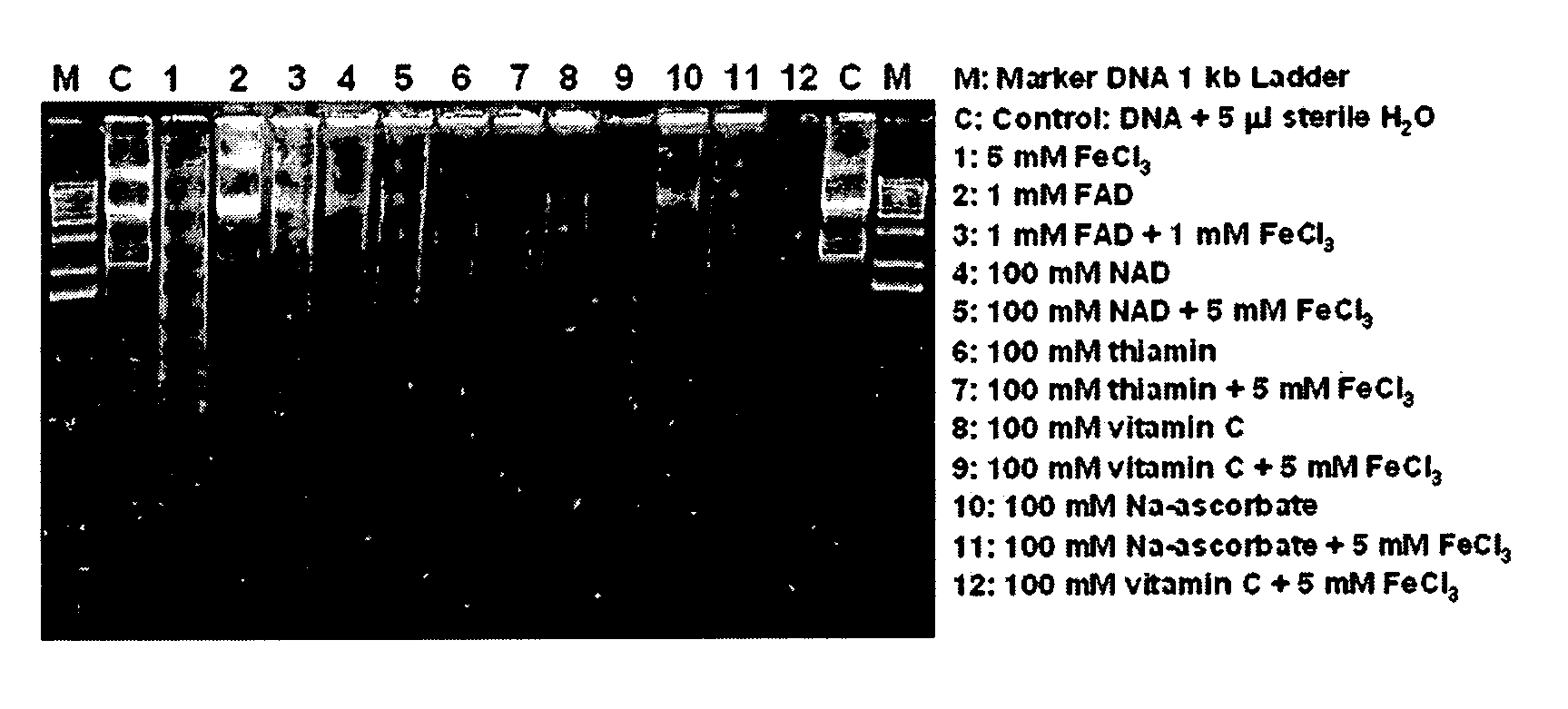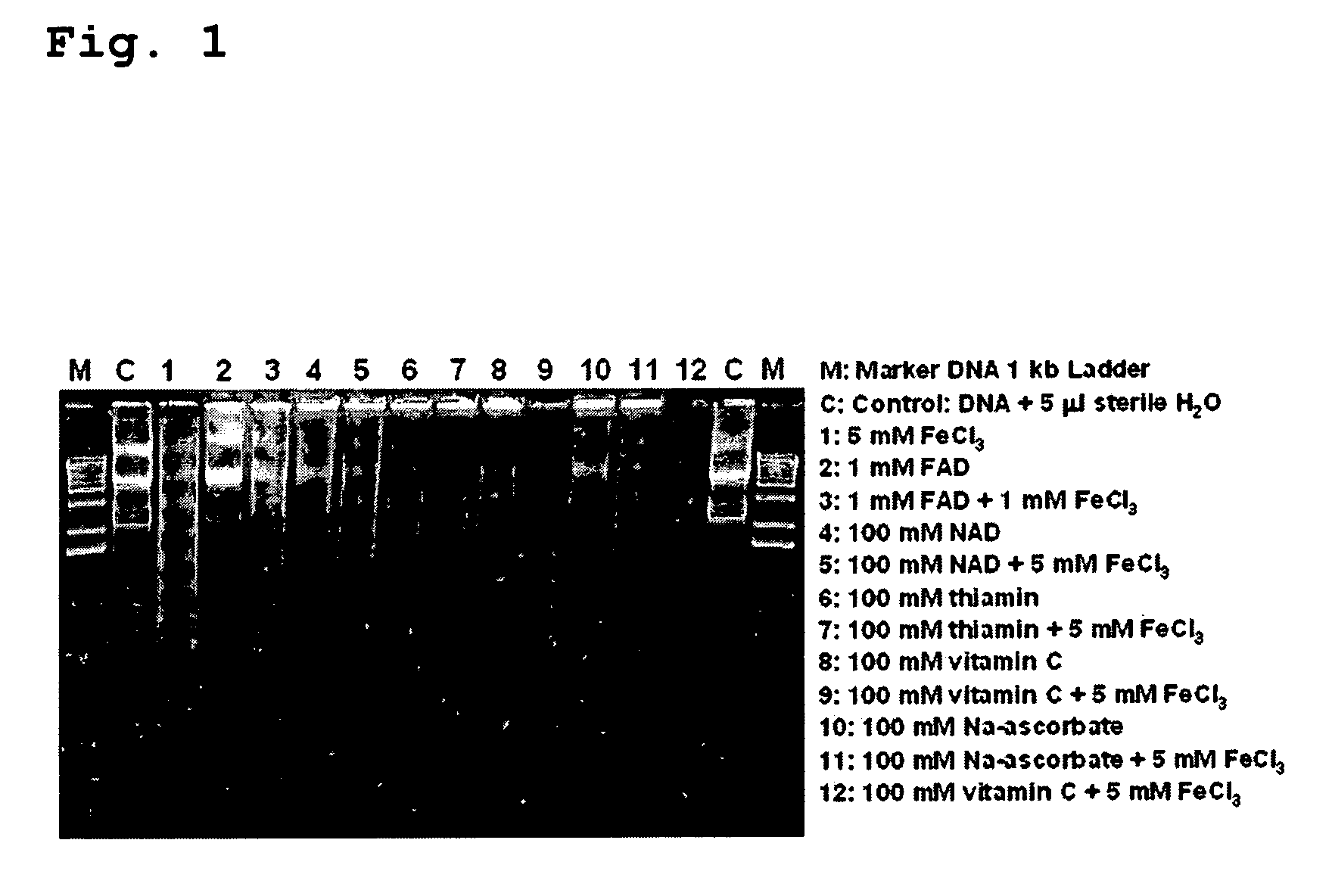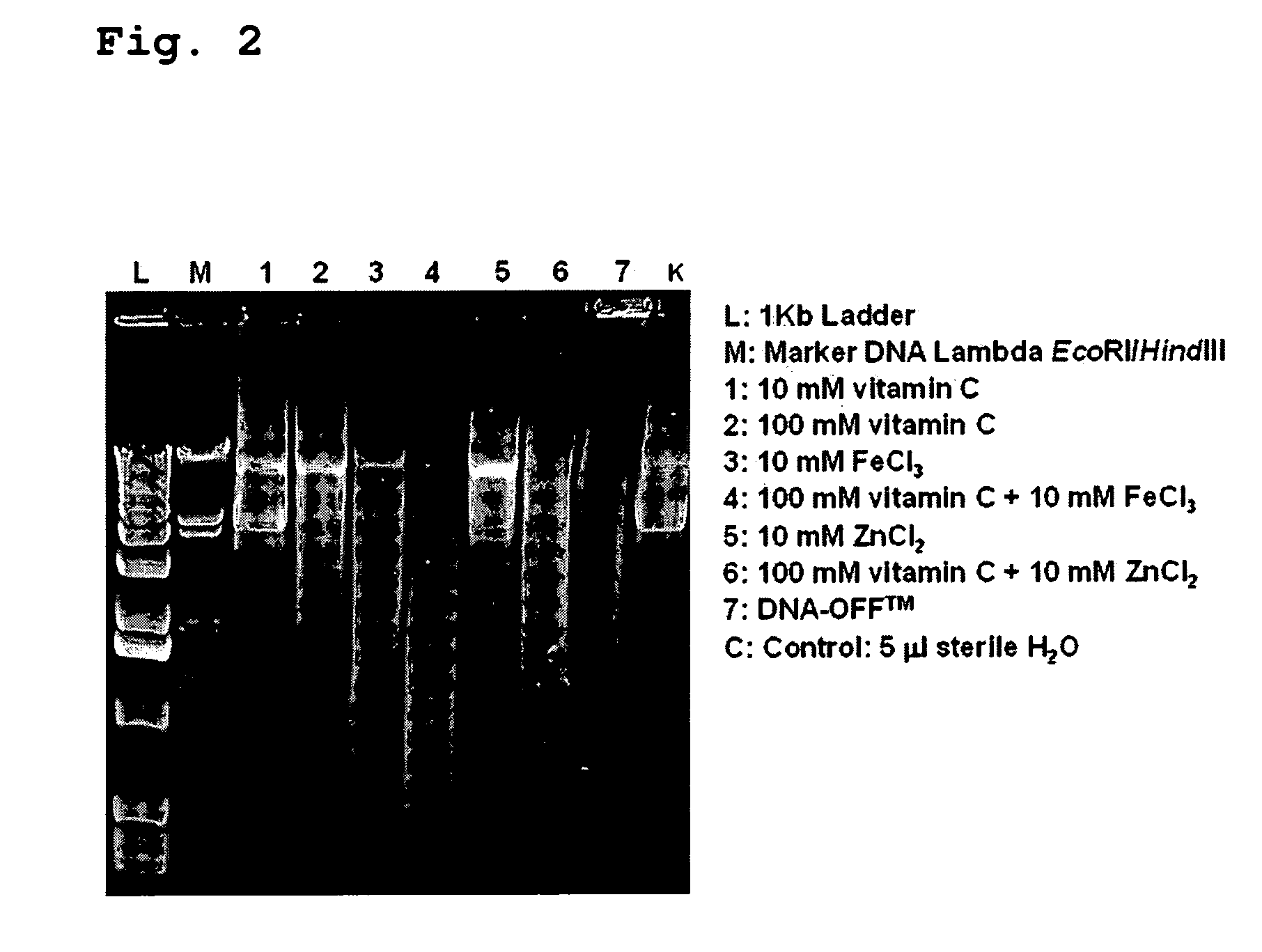Decontamination solution and its use for denaturation, modification, degradation, solubilisation and removal of proteins, nucleic acid molecules and microorganisms
a decontamination solution and technology for nucleic acid molecules, applied in the field of decontamination solutions, can solve the problems of incomplete removal, inappropriate amplification methods, remaining modified molecules, etc., and achieve the effect of rapid and massive degradation of biomolecules and ensured efficient decontamination solution according to invention
- Summary
- Abstract
- Description
- Claims
- Application Information
AI Technical Summary
Benefits of technology
Problems solved by technology
Method used
Image
Examples
Embodiment Construction
[0039]FIGS. 1 to 5 show the efficient degradation of DNA molecules by the new three component system in comparison with known other solutions. Identical aliquots of DNA plasmids (YEp351) were treated for 2 minutes with the listed solutions. Afterwards the DNA samples were denatured and the single-stranded DNA molecules were separated by gel electrophoresis on an agarose gel (1%). After staining with ethidium bromide the listed pictures were produced. The control shows intact plasmid DNA after treatment with sterile water. Introduction of nicks into the DNA strand results in a reduction of the size and molecular weight of the respective DNA molecules. This effect can be identified in the gel by comparison with the control and the molecular weight marker. In each sample 5 μg DNA were present in 5 μl sterile Tris buffer (1 mM; pH 8.0) and were treated for 2 minutes at room temperature with 5 μl of the listed solutions. Subsequently the samples were mixed with 5 μl 100 mM Tris (pH 12) a...
PUM
| Property | Measurement | Unit |
|---|---|---|
| pH | aaaaa | aaaaa |
| pH | aaaaa | aaaaa |
| pH | aaaaa | aaaaa |
Abstract
Description
Claims
Application Information
 Login to View More
Login to View More - R&D
- Intellectual Property
- Life Sciences
- Materials
- Tech Scout
- Unparalleled Data Quality
- Higher Quality Content
- 60% Fewer Hallucinations
Browse by: Latest US Patents, China's latest patents, Technical Efficacy Thesaurus, Application Domain, Technology Topic, Popular Technical Reports.
© 2025 PatSnap. All rights reserved.Legal|Privacy policy|Modern Slavery Act Transparency Statement|Sitemap|About US| Contact US: help@patsnap.com



